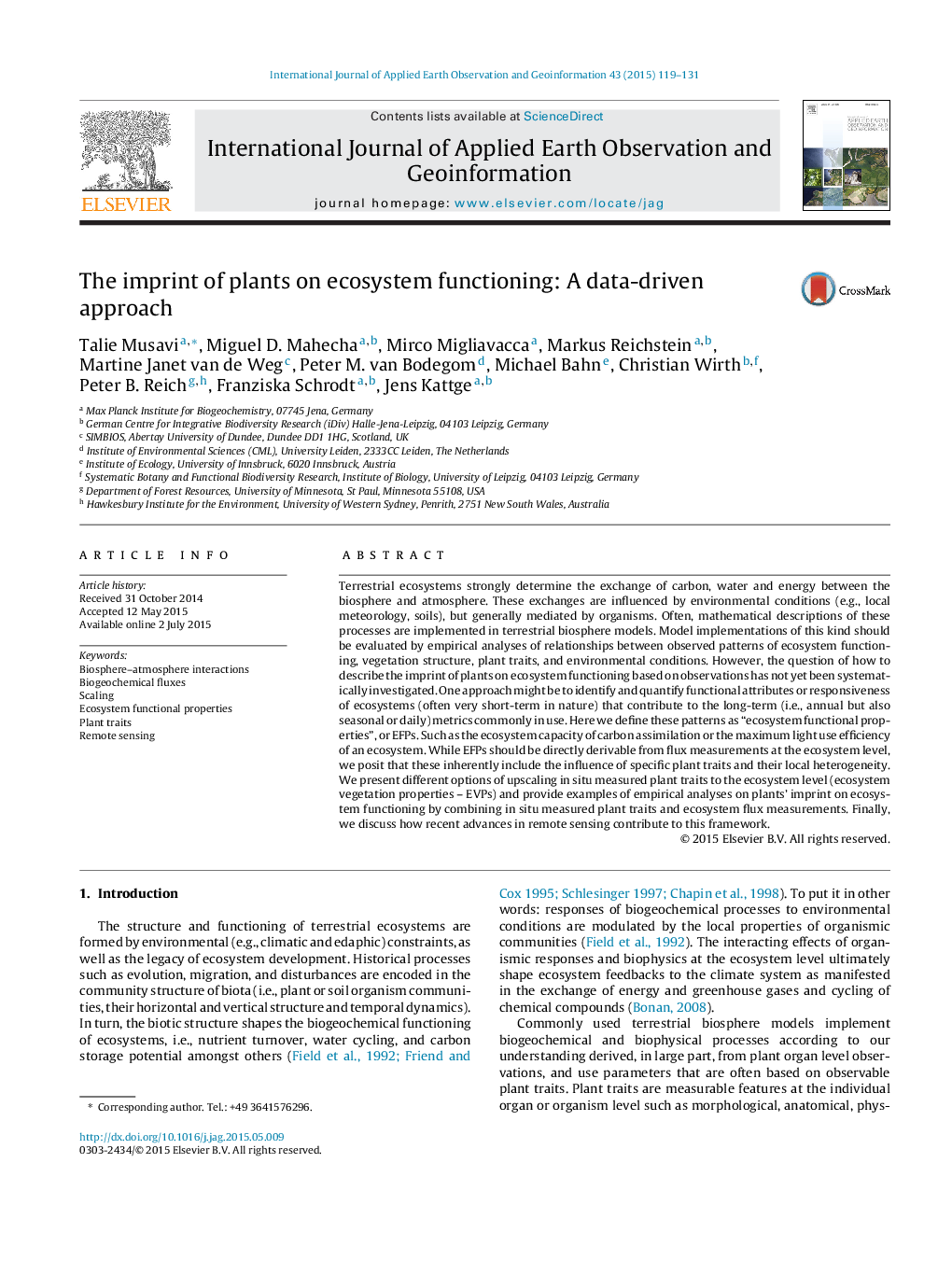| Article ID | Journal | Published Year | Pages | File Type |
|---|---|---|---|---|
| 6348582 | International Journal of Applied Earth Observation and Geoinformation | 2015 | 13 Pages |
â¢A novel pathway to analyze the biotic controls of terrestrial ecosystem functioning.â¢A conceptualization of ecosystem functional properties (EFPs).â¢Ecosystem functional property: observable proxy for the ecosystem functional state.â¢Perspectives for linking EFPs and their biotic correspondents with remote sensing.
Terrestrial ecosystems strongly determine the exchange of carbon, water and energy between the biosphere and atmosphere. These exchanges are influenced by environmental conditions (e.g., local meteorology, soils), but generally mediated by organisms. Often, mathematical descriptions of these processes are implemented in terrestrial biosphere models. Model implementations of this kind should be evaluated by empirical analyses of relationships between observed patterns of ecosystem functioning, vegetation structure, plant traits, and environmental conditions. However, the question of how to describe the imprint of plants on ecosystem functioning based on observations has not yet been systematically investigated. One approach might be to identify and quantify functional attributes or responsiveness of ecosystems (often very short-term in nature) that contribute to the long-term (i.e., annual but also seasonal or daily) metrics commonly in use. Here we define these patterns as “ecosystem functional properties”, or EFPs. Such as the ecosystem capacity of carbon assimilation or the maximum light use efficiency of an ecosystem. While EFPs should be directly derivable from flux measurements at the ecosystem level, we posit that these inherently include the influence of specific plant traits and their local heterogeneity. We present different options of upscaling in situ measured plant traits to the ecosystem level (ecosystem vegetation properties - EVPs) and provide examples of empirical analyses on plants' imprint on ecosystem functioning by combining in situ measured plant traits and ecosystem flux measurements. Finally, we discuss how recent advances in remote sensing contribute to this framework.
